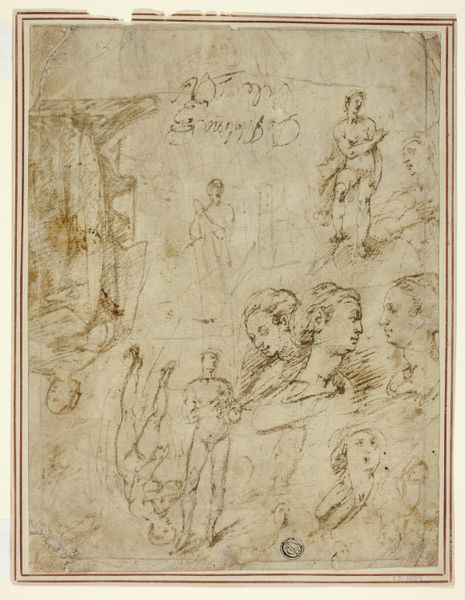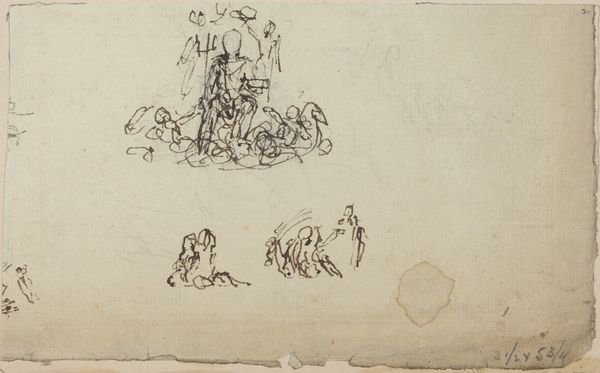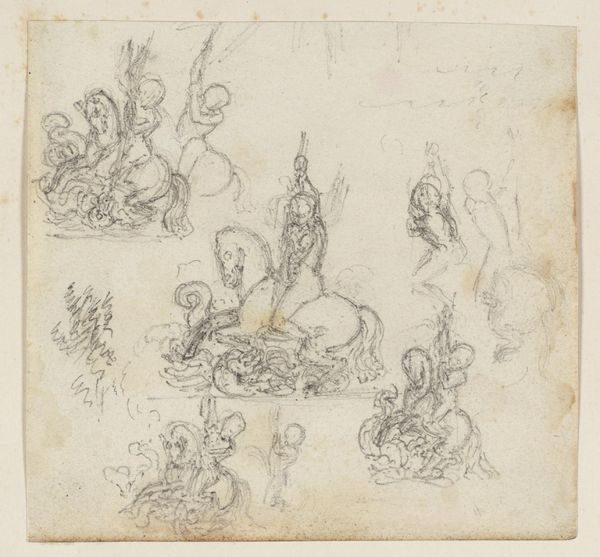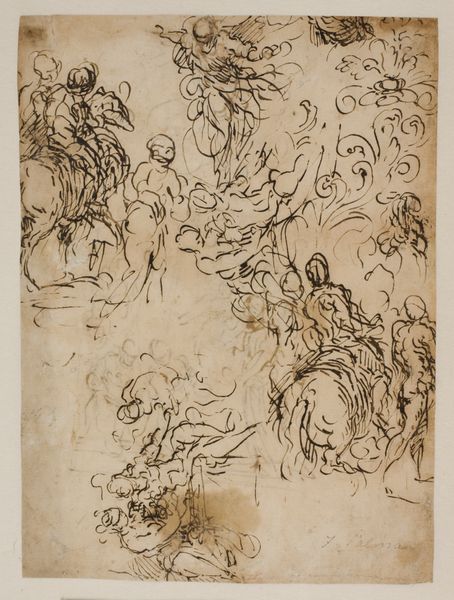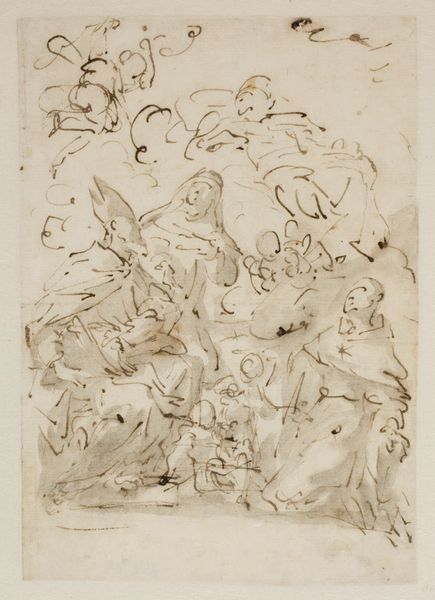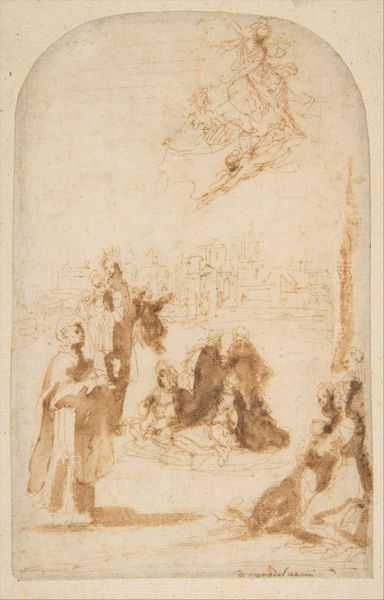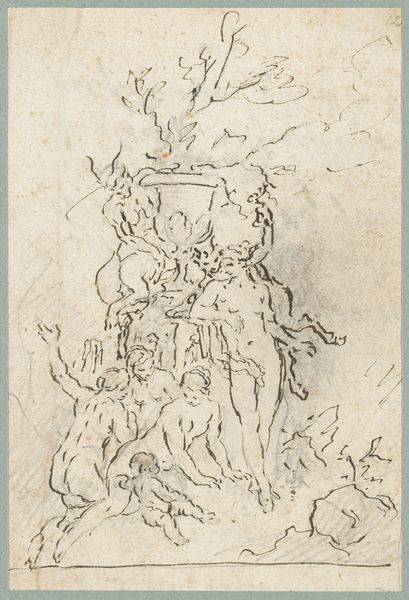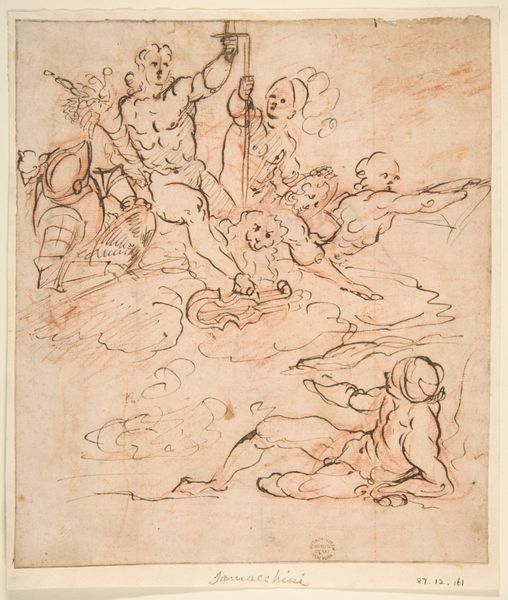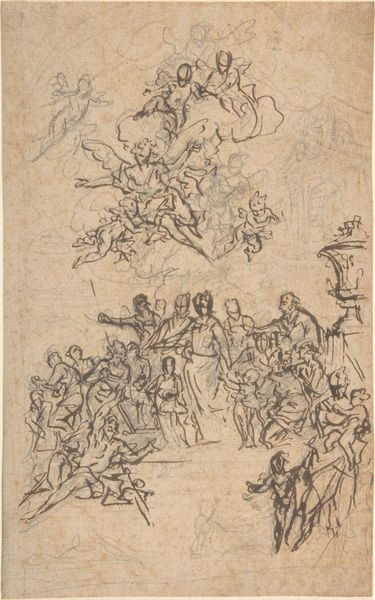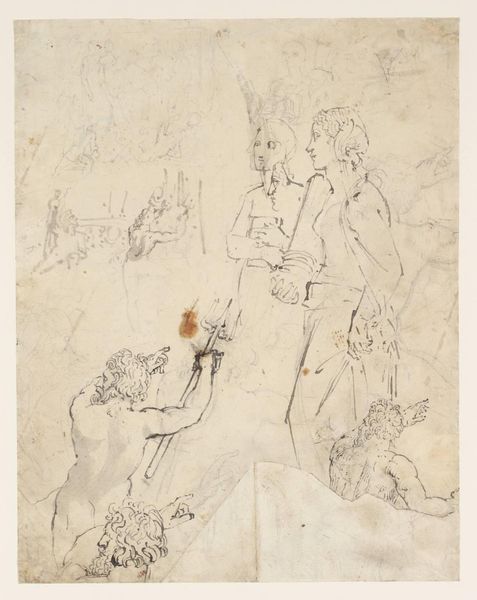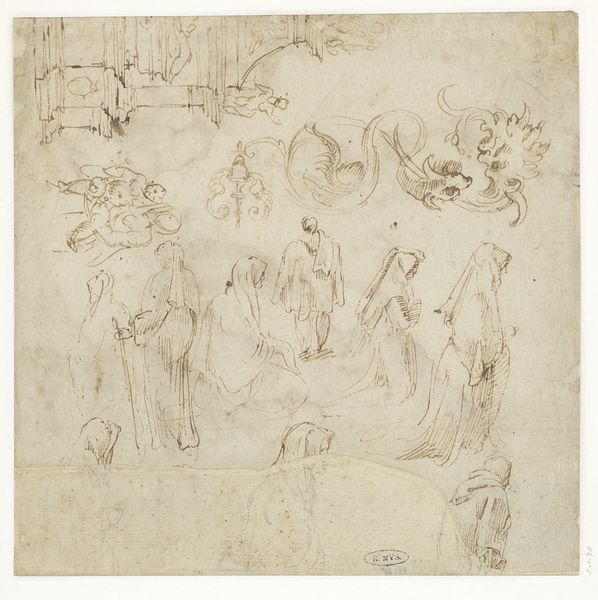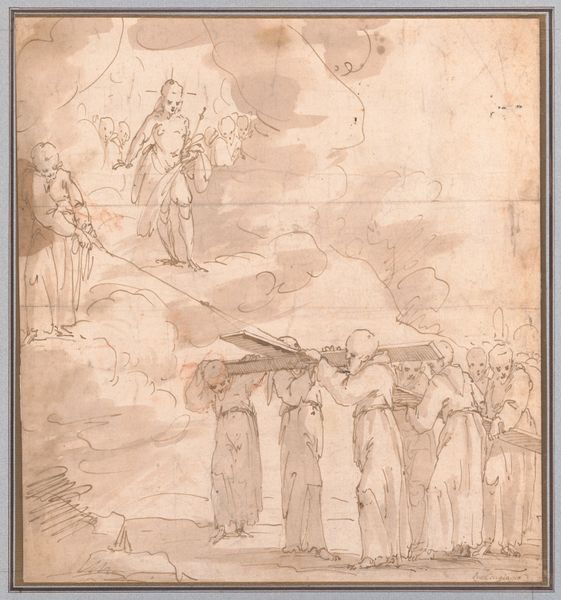
drawing, paper, ink
#
drawing
#
figuration
#
paper
#
ink
#
history-painting
#
academic-art
Dimensions: 259 mm (height) x 190 mm (width) (bladmaal)
Curator: Let's turn our attention to "The Baptism of Three Figures," a drawing by Jacopo Palma the Younger, created sometime between 1548 and 1628. It’s rendered in ink on paper, a study brimming with narrative potential. Editor: Right away, I’m struck by how ephemeral it feels. Those delicate ink lines barely tether the figures to the paper, as if the scene might dissipate any moment, like a memory. What do you make of it? Curator: Well, thinking about baptism as a ritual, it often signifies transformation, purification. Given Palma's context, working during a period of intense religious and political upheaval, this drawing speaks to larger questions about identity, faith, and the individual’s place within a rapidly changing world. Editor: Transformation for sure. Check out how Palma depicts that hovering figure—it’s like this whole burst of energy raining down, transforming the earth-bound supplicants. It's dramatic but sort of joyful. It does make me think about my own, non-religious, moments of reinvention. Have you ever considered art, rituals, or even your work, as tools for that sort of deep personal change? Curator: Absolutely, and considering its academic art style, one can explore how the artwork both adhered to, and possibly challenged, the established conventions of its time. How the figures are idealized, arranged... Do we accept that the figures shown, are an allegory of other religious identities who were challenged? How might that message have resonated in the social landscape of the 16th and 17th centuries? Editor: It also touches on the power of faith, in general. All those believers in the background—it’s as though baptism has collective weight. But even though I see figures transformed and devoted, something about the sketchiness gives it this modern immediacy. Maybe even fragility of belief itself? Curator: Interesting. I'm glad you point that out, because the drawing gives us, at this point in time, a sense of intimacy, to be brought back to such historical scene, which makes one consider about cultural transmission. Editor: So much food for thought in such delicate lines. It makes you question whether it's not just about the historical context of an event, but our contemporary moment reflected, distorted, in the "water". Curator: Indeed. "The Baptism of Three Figures," it’s far more than just a historical record; it's an enduring echo of faith and reinvention.
Comments
No comments
Be the first to comment and join the conversation on the ultimate creative platform.
